
Our research
Aero-acoustics
The group contributes numerical methods and experimental data over a wide range of aerospace engineering applications, including the following:
- Aero-acoustics of aircraft components (both streamlined and bluff bodies), including low-order modelling and high-level numerical simulations (Large-Eddy Simulations) requiring high-performance computing (HPC).
- Aero-acoustics and aerodynamics of rotating systems, with specific interest in propellers, general aviation counter-rotating open rotors (CROR) and engine fans.
- Noise minimisation by using non-gradient optimisation strategies, with applications to component design (propellers, CROR), as well as aircraft trajectories.
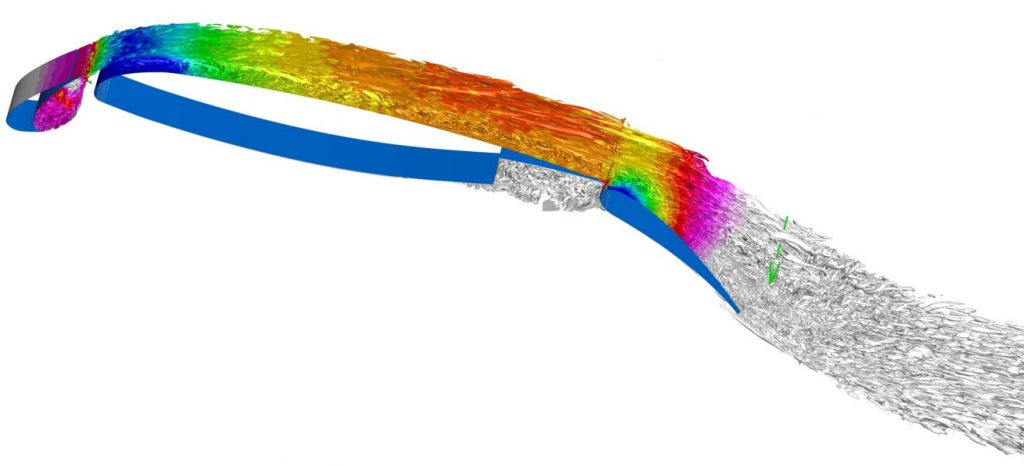
LES of a high-lift system to predict acoustic emissions
Computational aerodynamics
Our group builds on our world-leading reputation in turbulence physics to work at the forefront of modelling and simulation technology for industrial aerodynamics. Our depth of experience in turbulence modelling and simulation spans seven EU-funded projects in the past decade and direct industrial funding of multiple million pounds in the same period.
We use both Finite Volume codes and the Lattice Boltzmann Method, and we strive to continually innovate. Recognising the shifting landscape of industrial Computational Fluid Dynamics, we work hard to get the most from novel methods and advanced computer technology.
In particular our work includes:
- Developing and refinement of advanced turbulence models for industrial applications, capable of operating in time-average or flow-resolving modes of use.
- Development of semi-automated embedded Large Eddy Simulation capabilities which pave the way for multi-fidelity analysis.
- Development of interactive aerodynamics analysis, capable of leveraging emerging computational platforms to deliver faster and more informative insight into complex aerodynamics.
- Application of our methods to complex geometries without comprise of accuracy and efficiency.
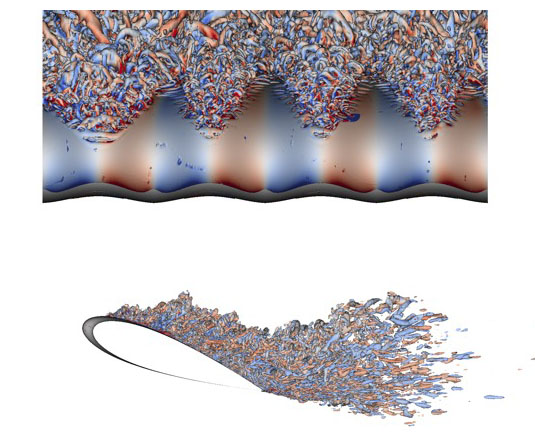
Large Eddy Simulation of flow around a wing with an undulating leading edge – inspired by the fins of a humpback whale
Advanced flow diagnostics
We develop flow diagnostic techniques to help improve the fidelity of data produced by testing and increase our insight into the flow physics. This dedicated line of research in measurement science facilitates collaboration between research groups within the school (and other schools), cross-institution, and also with industrial partners.
Having such a strong track record of pushing the boundaries of measurement science with specific applications in mind has helped the department work on some very exciting projects with the European Commission, European Space Agency, US Air Force, and many more.
Our current aims are to take traditionally expensive and cumbersome equipment and replace it with smaller, cheaper, and where possible, faster hardware. This not only breaks down financial barriers, enabling more universities and research groups to generate data, but also enables us to generate bespoke solutions for specific research challenges.
The flexibility of this technology enables us to be able to apply our skills and knowledge to every part of a vehicle and increasingly investigate biomimetic flows too.
European Space Agency Network partnering initiatives
We currently have a research project in collaboration with the European Space Agency investigating experimental techniques that can be applied to high-speed wind tunnel tests to investigate the breakup of satellites and other space debris.
The work is performed in our high supersonic wind tunnel at Mach 5 and uses light as the measurement device to investigate objects as they move away from each other.
The project outcomes so far have been an increased understanding of specific experimental techniques and their applicability (specifically background-oriented schlieren) and has led to collaborative wind tunnel campaigns being conducted at other European facilities such as the H2K wind tunnel at DLR Cologne.
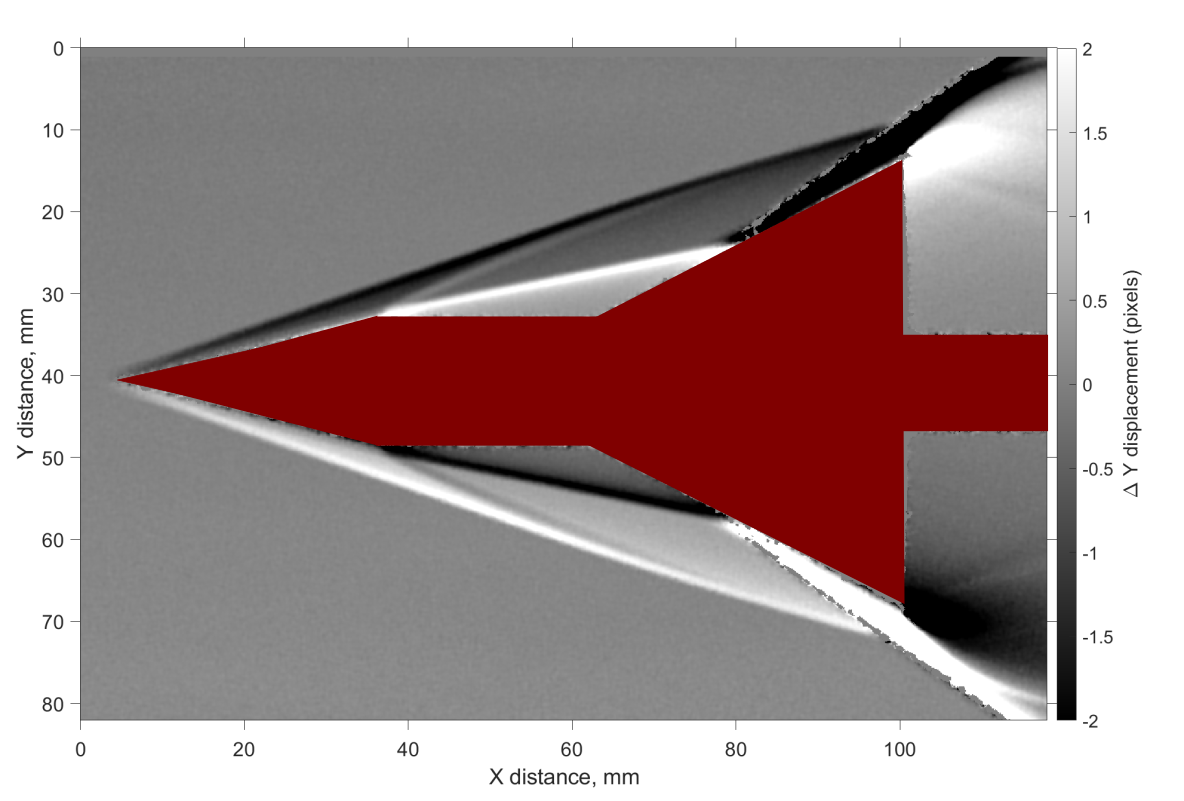
Flow control
The group has performed significant aerodynamic testing and development of active and passive flow control technologies. Of particular note are the active flow control devices which can be tailored to increase mixing, reduce skin friction drag, reduce separation, control shock position or induce thrust vectoring. Manchester has a reputation for excellent work in the area of active flow control, particularly flow separation control using synthetic jets and thrust vectoring.
The research performed by the Manchester group led to the development of the cornerstone technology used in the FLAVIR project that led, in 2009, to the demonstration of ‘the world’s first flapless aircraft’, BAE Systems’ Demon. Further developments on this technology are aimed at increasing the power density of such devices so they may be incorporated in future low-observability aircraft platforms.
This group performs numerical and experimental research into novel designs of active and passive flow control devices. Various different active flow control technologies are under investigation such as piezo-electric actuators, dielectric barrier plasma actuators and synthetic jets.
The experimental facilities at Manchester allow the group to progress through the complete cycle from idea conception to test. The proven test capability to investigate the fundamental flow physics has resulted in the group performing projects across all speed regimes, up to and including hypersonics with interest from a wide range of industries.
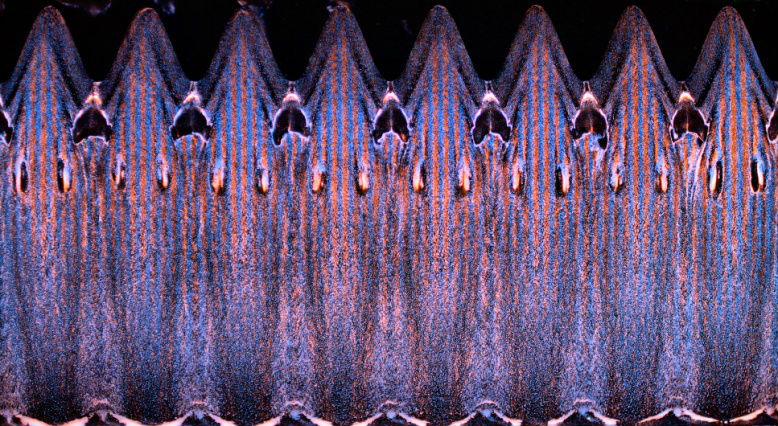
Oil flow viz image on the surface of a 2D aerofoil with leading edge tubercles
Hypersonic flows
We employ both numerical and experimental approaches to study aerodynamics and heat transfer phenomena encountered by hypersonic re-entry space vehicles with complex 3D geometry. Advanced experimental techniques are used to investigate the flow physics and develop methods for reducing the adverse effects of shockwave-boundary layer interaction and improving the controllability of hypersonic vehicles.
The group has extensive experience in numerical simulations of chemically and thermodynamically non-equilibrium hypersonic flows, heat and mass transfer in free-molecular, transitional and continuum regimes of flows, which also incorporate turbulence, chemical reactions and radiation. Our research is carried out in close collaboration with TsAGI (Central Aerohydrodynamic Institute) and Moscow Institute of Physics & Technology and the European Space Agency.
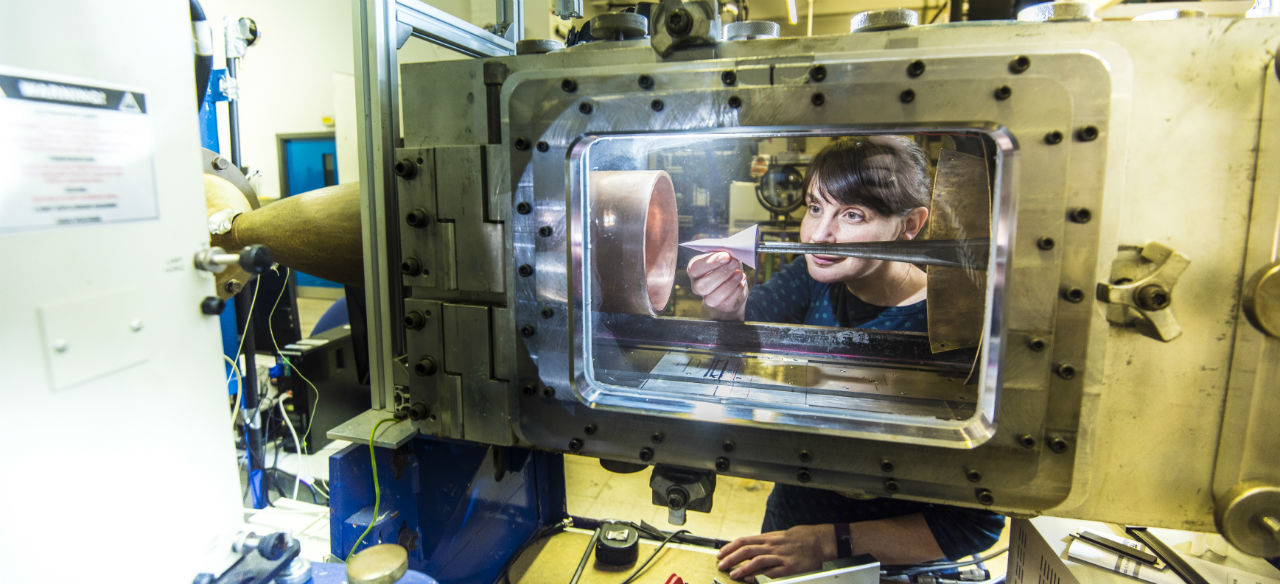 Hypersonic wind tunnel operating at the School of MACE
Hypersonic wind tunnel operating at the School of MACE
Particle filtration
We have interest and expertise in a variety of engineering problems affected by dusty environments. These include dust ingestion by aero-engines (turbofans and helicopter turboshafts), dust clouds around helicopters (brownout), volcanic ash ingestion by turbofan engines in flight. We also specialise in characterisation of particulate and mineralogy, engine blades erosion modelling, design and optimisation of intake protection systems (air particle separators, EAPS), analysis of operating costs (cost of ownership) of aero-engines operating in extreme environments.
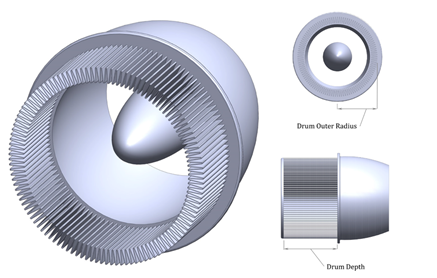
Prototype of self-cleaning filter by rotating drums
Rotorcraft/Vertical lift systems research
Our research builds on many years of experience in fundamental research in aerodynamics, aero-acoustics, aero-mechanics, design and engine propulsion, with funds from a variety of sources (EPSRC, EU, industry and private sponsors). We recognise the rapidly changing world of rotorcraft/helicopters and the advancements in vertical lift systems, such as personal air vehicles, unmanned rotary systems platforms, tilt-rotors, high-speed and long-endurance rotorcraft.
We work in cooperation with other institutes and departments in the University, such as the Aerospace Research Institute, the National Composites Centre, and the School of Earth & Atmospheric Sciences. Examples of our current research are as follows:
Fundamental research
- Advanced CFD methods and high-performance computing (HPC)
- Turboshaft engines aero-thermal systems, inlet aerodynamics, blade row aerodynamics
- Chemical and physical characterisation of intake dust on rotorcraft engines
- Multi-fidelity tools for analysis, optimisation and design
- Rotor acoustics/vibrations and aircraft noise
Application areas
- Rotor systems aerodynamics (helicopters, propellers, advanced open rotors)
- Bluff body aerodynamics (fuselage and airframe components, including ground effect)
- Helicopter aeromechanics, including advanced tilt-rotors
- Flight into downbursts, dust clouds and volcanic ash clouds
- Multi-disciplinary rotor blade design, including composite manufacturing, instrumentation
- Intake protection system design, including self-cleaning filters
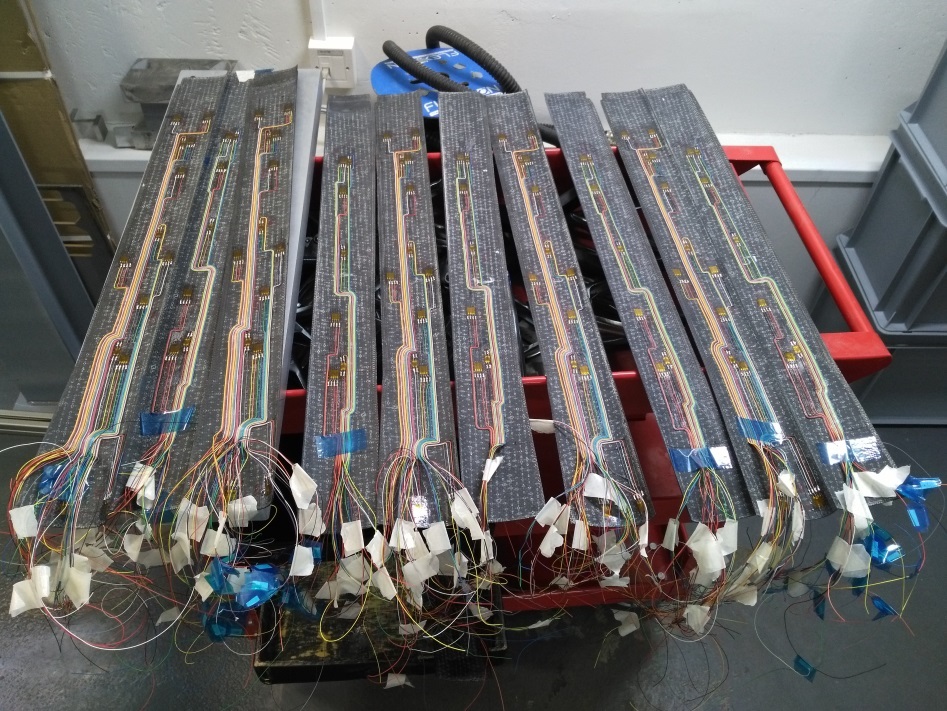
Composite manufacturing of instrumented helicopter rotor blades
Facilities
Our Aerodynamics researchers enjoy access to world-leading wind tunnels and super-computing capability.
Opportunities
Find out about research opportunities in Aerodynamics and how to apply.
Activities and events
Find out about upcoming seminars, conferences and courses.

